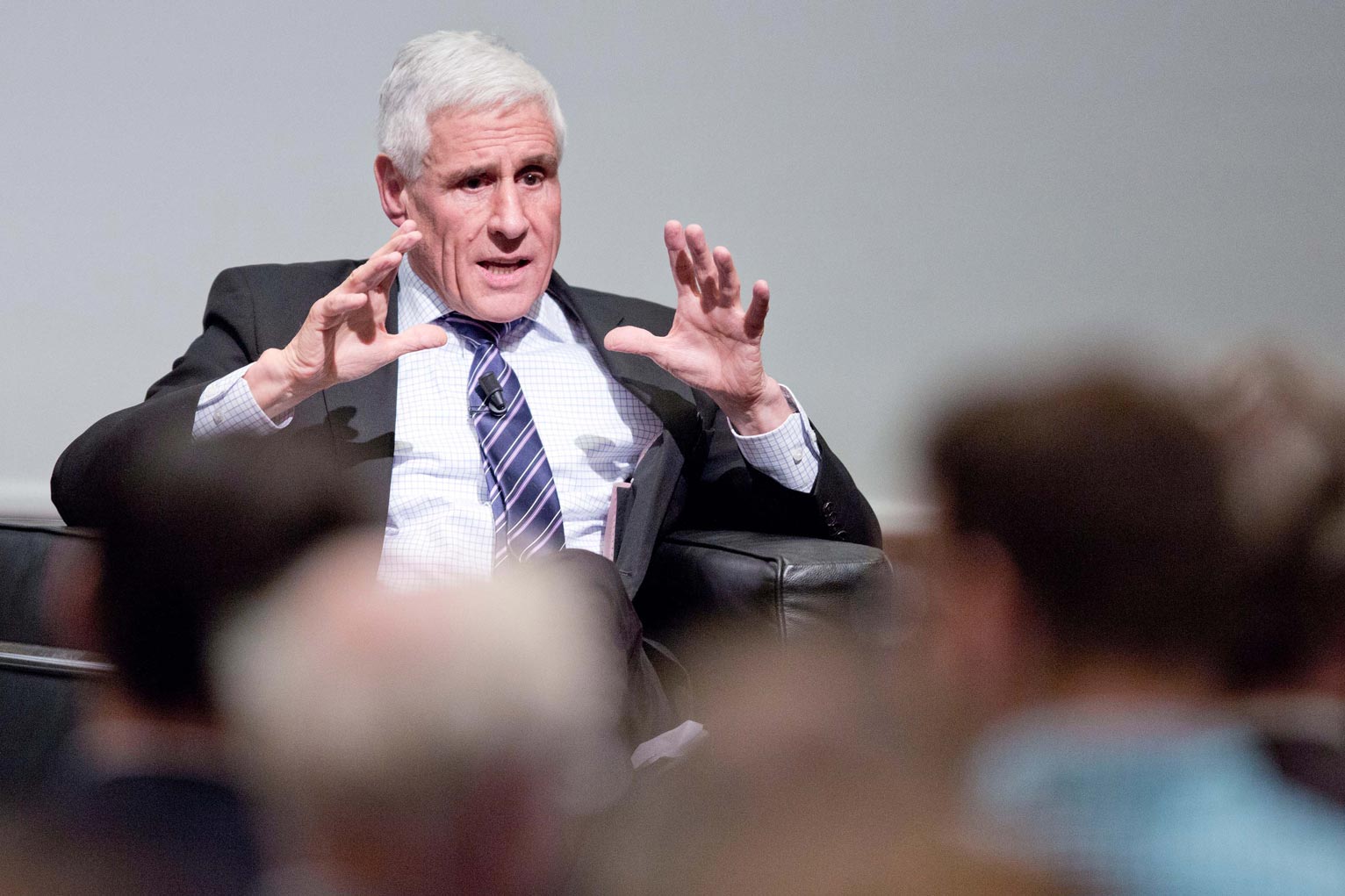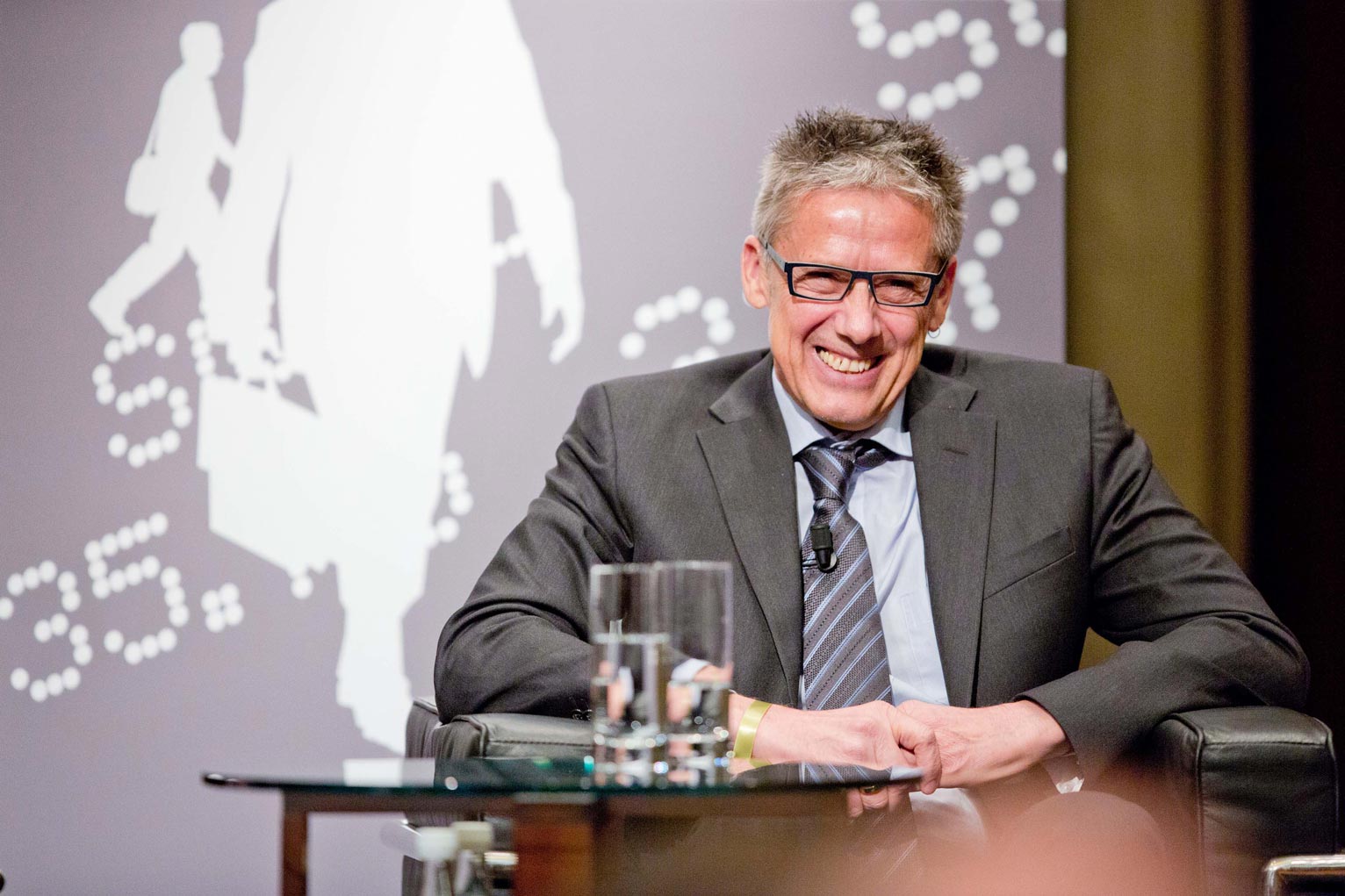Human capital as major economic factor
by Maura Wyler
The success of companies is strongly linked to the personal know-how of their employees. On a macroeconomic level, the wealth of nations greatly depends on investment in human capital. For Switzerland with few natural resources, the many positive effects of strong human capital are particularly important. But what kind of human capital does Switzerland need? Where do we face shortages and where oversupply? Based on these insights, what type of education system would be best suited to produce such human capital? How is our human capital best deployed to maximize economic welfare in our country? Experts from science, business, and politics discussed these and more questions at the UBS Center’s annual Podium, which took place in Zurich on June 23, 2015.
by Maura Wyler
The success of companies is strongly linked to the personal know-how of their employees. On a macroeconomic level, the wealth of nations greatly depends on investment in human capital. For Switzerland with few natural resources, the many positive effects of strong human capital are particularly important. But what kind of human capital does Switzerland need? Where do we face shortages and where oversupply? Based on these insights, what type of education system would be best suited to produce such human capital? How is our human capital best deployed to maximize economic welfare in our country? Experts from science, business, and politics discussed these and more questions at the UBS Center’s annual Podium, which took place in Zurich on June 23, 2015.

The Swiss educational system works well
Moderator Haig Simonian introduced the first panel discussion by raising several questions on the educational landscape in Switzerland: What do Swiss children learn at school? Is the curriculum appropriate? At what age should school start? Valentin Vogt (President of the Swiss Employers Association) proposed measuring the curriculum by its impact on the labor market: Switzerland has a high employment rate of both women and elderlies, employees work relatively long years, so that fully “84% of the population aged between 15 and 64 years are integrated into the work process.“
These numbers, most discussants agreed, are proof of the efficiency of Switzerland’s education system. In terms of explanations, Vogt regards the dual educational system as the “hidden champion” of Switzerland. However, he also identifies problem areas, such as the lacking affinity with technology among women, who nowadays account for two thirds of all bachelor’s degrees achieved. So “where will we find the engineers of the future, unless we do something about this?”
Rudolf Strahm (Economist, Publicist) agreed on the important role of the dual system, citing employability of young people as a further indicator of its success. In all European countries with dual educational systems, less than 10% of the youth is unemployed. In comparison, the European average is 23%, and it is above 40% in southern European countries. He emphasized that the dual educational system fosters not only academic knowledge but also practical intelligence and mechanical skills: “Young people need not only be educated, but made employable.” The key to the continuing success of the system is its permeability, allowing lifetime learning and upgrading qualifications.
Strahm furthermore underlined the importance of the highly skilled trades, which he sees as one of the major strengths of Switzerland as an expensive location for industry, which should be fostered more and more highly esteemed.
Monika Bütler (University of St. Gallen) fears that many pupils with mathematical talents never make it to high school because of an overemphasis on foreign languages and soft skills. She sees this relatively recent shift toward such skills as problematic from a labor market perspective. Moreover, this trend affects the educational prospects of different groups very unevenly, with migrant children and boys being the main losers. She thus called for a certain reversal in that trend and for an increased focus on STEM (science, technology, engineering, mathematics), where Switzerland is not doing very well in international comparisons, particularly in areas such as statistics and data analysis.
In his role as State Secretary for Education, Research and Innovation, Mauro Dell’Ambrogio provided the “official” view, which also sees the dual educational system as one of Switzerland’s key strengths. And as 65% of apprentices work at the same time, this not only has the advantage of learning by doing, but simultaneously reduces the shortage of skilled labor. In his keynote address, Dell’Ambrogio also countered the argument that this system with the relatively low number of university students works against equal opportunities: The experience from other countries shows the rising number of university places were disproportionately taken up by children from privileged backgrounds rather than by outstanding pupils from less privileged backgrounds. However, one potential problem mentioned by the State Secretary are the dramatic gender differences: “While girls opt for higher education, boys choose vocational training.”
Moderator Haig Simonian introduced the first panel discussion by raising several questions on the educational landscape in Switzerland: What do Swiss children learn at school? Is the curriculum appropriate? At what age should school start? Valentin Vogt (President of the Swiss Employers Association) proposed measuring the curriculum by its impact on the labor market: Switzerland has a high employment rate of both women and elderlies, employees work relatively long years, so that fully “84% of the population aged between 15 and 64 years are integrated into the work process.“
These numbers, most discussants agreed, are proof of the efficiency of Switzerland’s education system. In terms of explanations, Vogt regards the dual educational system as the “hidden champion” of Switzerland. However, he also identifies problem areas, such as the lacking affinity with technology among women, who nowadays account for two thirds of all bachelor’s degrees achieved. So “where will we find the engineers of the future, unless we do something about this?”



Swiss economy depends on imported human capital
The second panel discussion focused on the importance, the consequences and the future of imported human capital. Ulf Berg (Chairman of Ems Chemie) regards the plurality and international orientation, which is fostered through migration as crucial: “We need to compete with the best.”
Walter Leimgruber (University Basel) proposed viewing immigration not as a problem, but focusing on its potential: “A great part of our economic success we owe to highly qualified migrants.” He justified this statement with numbers: 60% of all listed companies in Switzerland currently have foreign CEOs, and 50% of all resident doctors in Swiss hospitals are immigrants. Leimgruber would also predict disastrous consequences for the country in the field of science if it really were to close its borders to new migrants following the mass immigration initiative: “There will be no research without global networking. Modern research depends on global crosslinking.”
On a rather different note, Leimgruber also pointed out that much potential in the female workforce remains unused, since “50,000 women with university degrees are not working.” While cultural reasons still play a certain role, all the panelists agreed that the decisive factor is a tax system that can grotesquely punish double earners: In some cases, marginal tax rates for households can exceed 100%, taking away all financial incentives for women to work part-time in addition to caring for their children. Gerhard Pfister (Member of the Swiss National Council) emphasized that Switzerland needs to tap the full potential of second-generation immigrants, which could be strengthened by increasing the number of teachers with a migration background, and by increasing the efforts to render migrants proficient in both their mother tongue as well as in one of the official languages. He identified several other disincentives in the Swiss educational system, such as the restricted admission to medical school: “We keep young motivated Swiss students from becoming doctors, only to import young doctors.” In terms of a general assessment, Pfister was concerned that Switzerland forgets about the sources of its wealth, which he sees in the availability of highly qualified employees. “This is the reason why companies settle in Switzerland, not the low taxes,” he argued.
The second keynote speaker, Christian Dustmann (University College London), provided scientific insights into the topic of migration. In an impressive presentation, he showed the economic effects of migration. Although migration always generates a surplus in economic terms, it also always leads to redistributional effects. “This is central in understanding the political debate,” Dustmann said. A second fundamental insight is that “migration comes in completely different forms, as the composition of migrants varies dramatically even between neighboring European countries.” In France, for instance, the largest groups of immigrants all come from various North African countries and have very different cultural and religious values than the native population. Immigrants to Switzerland, by contrast, come mostly from neighboring countries, meaning that they have largely common cultural and religious values and in many cases even the some mother tongue, which makes the integration of these migrants into the local labor market and the communities radically easier. When it comes to the debate on migration, however, economic facts are one thing. And as various studies show, people – and hence public debate – are on average much more influenced by individual perceptions and non-economic factors.
The second panel discussion focused on the importance, the consequences and the future of imported human capital. Ulf Berg (Chairman of Ems Chemie) regards the plurality and international orientation, which is fostered through migration as crucial: “We need to compete with the best.”
Walter Leimgruber (University Basel) proposed viewing immigration not as a problem, but focusing on its potential: “A great part of our economic success we owe to highly qualified migrants.” He justified this statement with numbers: 60% of all listed companies in Switzerland currently have foreign CEOs, and 50% of all resident doctors in Swiss hospitals are immigrants. Leimgruber would also predict disastrous consequences for the country in the field of science if it really were to close its borders to new migrants following the mass immigration initiative: “There will be no research without global networking. Modern research depends on global crosslinking.”
